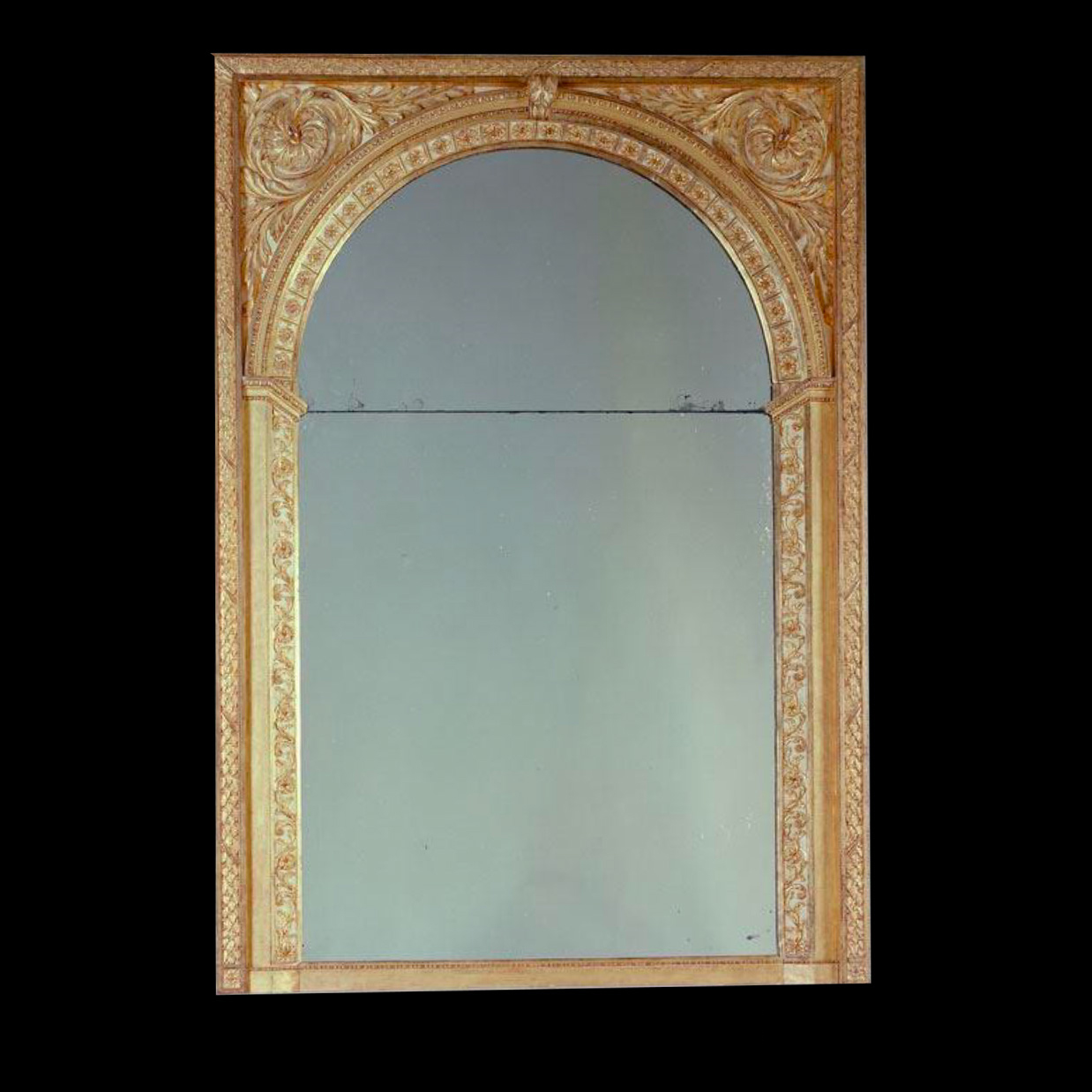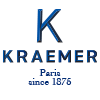IN THE MUSEUMS
Large mirror – Louis XVI era
Large mirror with a carved gilded and painted wooden frame featuring leaf-shaped patterns.
Provenance: Kraemer Gallery
J.Paul Getty Museum, Los Angeles.
This large overmantel mirror was meant to be placed on top of a mantlepiece and framed by two wall sconces. It sports a flat, carved wood frame. At the top, two rose-shaped patterns have been carved in their triangular compartments.
In the 17th century, mirrors were made by overlaying a pane of glass with a sheet of tin and lead, which was dissolved using mercury. This technique was a way of capturing the rays of light to better diffuse them. It resulted in greyish blue tones, and a sparkling effect. Crafting a large pane of glass was a difficult process, given how fragile and expensive glass was. This is why mirrors were often made using several smaller panes of glass, as is the case here.
Dissolving metals using mercury releases dangerous fumes. A new technique that relied on silver nitrate was invented in 1835. Mercury was then prohibited and mirrors became a lot cheaper.


